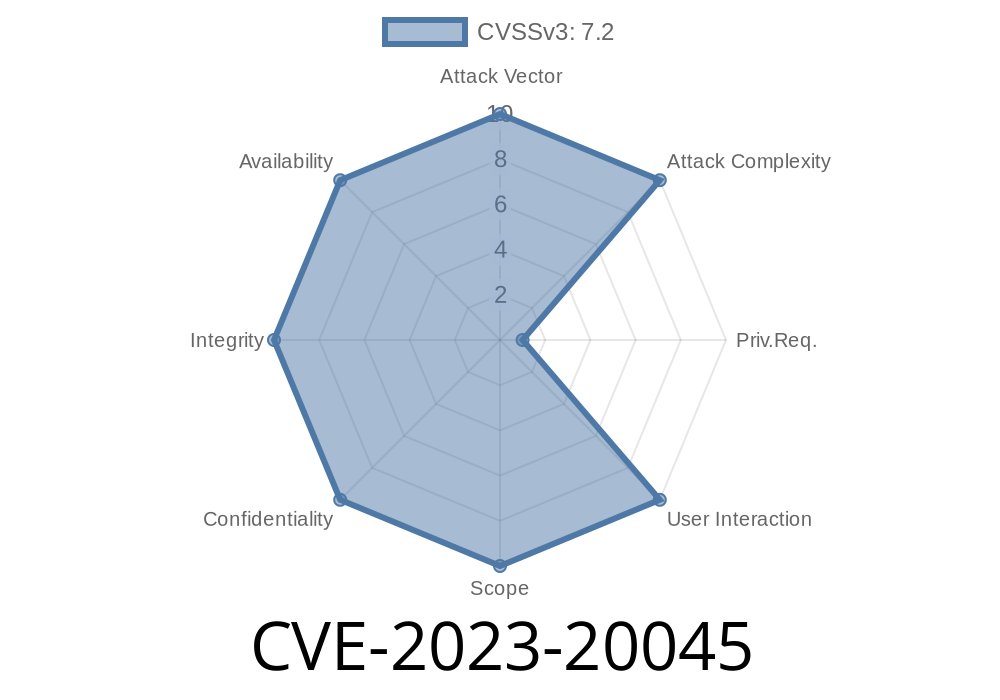Introduction: In recent times, there have been significant vulnerabilities discovered in popular network devices. One such vulnerability was discovered in the web-based management interface of Cisco Small Business RV160 and RV260 Series VPN Routers. This vulnerability, CVE-2023-20045, could potentially allow remote attackers to execute arbitrary commands on the underlying operating system of the affected devices, using root-level privileges.
This post will delve into the details of the critical security vulnerability found in these routers, how it can be exploited, and what can be done to mitigate the risk. We'll also provide code snippets to demonstrate the exploit and include links to the original references.
Vulnerability Overview: The vulnerability CVE-2023-20045 has been found in the web-based management interface of Cisco Small Business RV160 and RV260 Series VPN Routers. This vulnerability occurs due to insufficient validation of user input. In essence, it means that an attacker can send a maliciously crafted request to the web-based management interface of the affected device, and if successful, would enable them to execute arbitrary commands with root-level privileges.
Exploit Details: To exploit CVE-2023-20045, an attacker must have valid Administrator-level credentials on the affected device. With these credentials, the attacker can send a crafted request, as shown in the code snippet below:
POST /admin/command_injection HTTP/1.1
Host: target_router_IP:port
User-Agent: ...
...
Content-Length: ...
...
command=;arbitrary_shell_command_here
...
The attacker would replace "arbitrary_shell_command_here" with the shell command they wish to execute on the affected device. If the exploit is successful, the attacker would have successfully executed the command on the underlying operating system of the device with root-level privileges.
Mitigation: Cisco has acknowledged this vulnerability in their Cisco Security Advisory and has released patches to address it. Users of the affected Cisco Small Business RV160 and RV260 Series VPN Routers are advised to update their firmware as soon as possible to mitigate the risk of this vulnerability. You can download the relevant patches from the following Cisco Release Notes:
- Cisco RV160 Release Notes: https://www.cisco.com/c/en/us/support/routers/rv160-vpn-router/model.html
- Cisco RV260 Release Notes: https://www.cisco.com/c/en/us/support/routers/rv260-vpn-router/model.html
In addition to applying the patches, users are advised to restrict access to their network devices by implementing necessary security measures such as restricting network access to a limited number of trusted machines and using strong, unique passwords for Administrator-level accounts.
Conclusion: The CVE-2023-20045 vulnerability in Cisco Small Business RV160 and RV260 Series VPN Routers could have potentially dire consequences if exploited. However, with the proper measures taken, including updating the firmware on the devices and implementing necessary access control measures, the risk can be mitigated. Always remain vigilant and stay updated on the latest security advisories to ensure that your network devices remain secure.
Timeline
Published on: 01/20/2023 07:15:00 UTC
Last modified on: 01/30/2023 19:00:00 UTC
